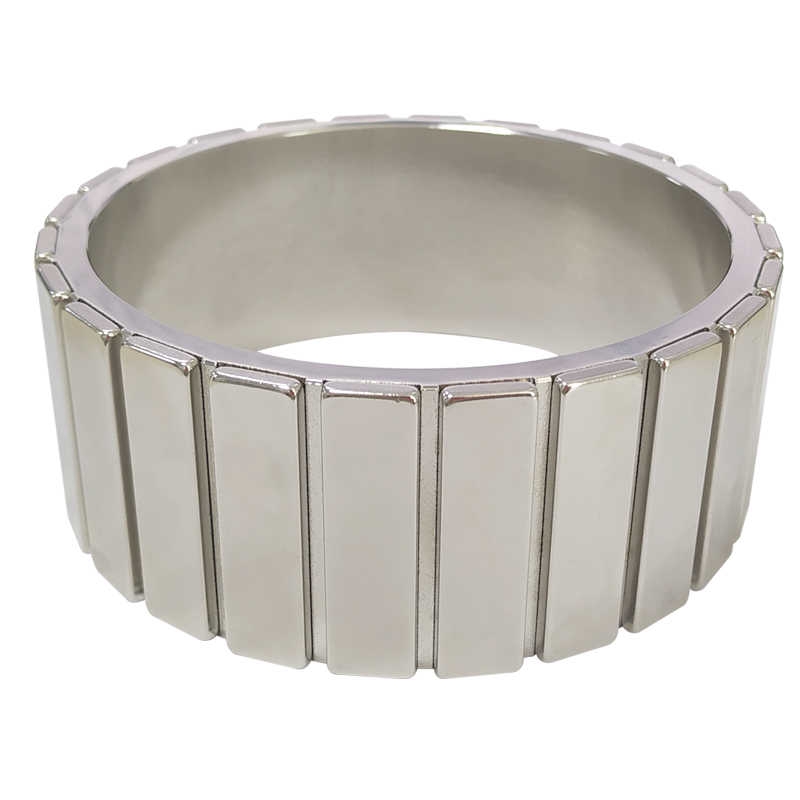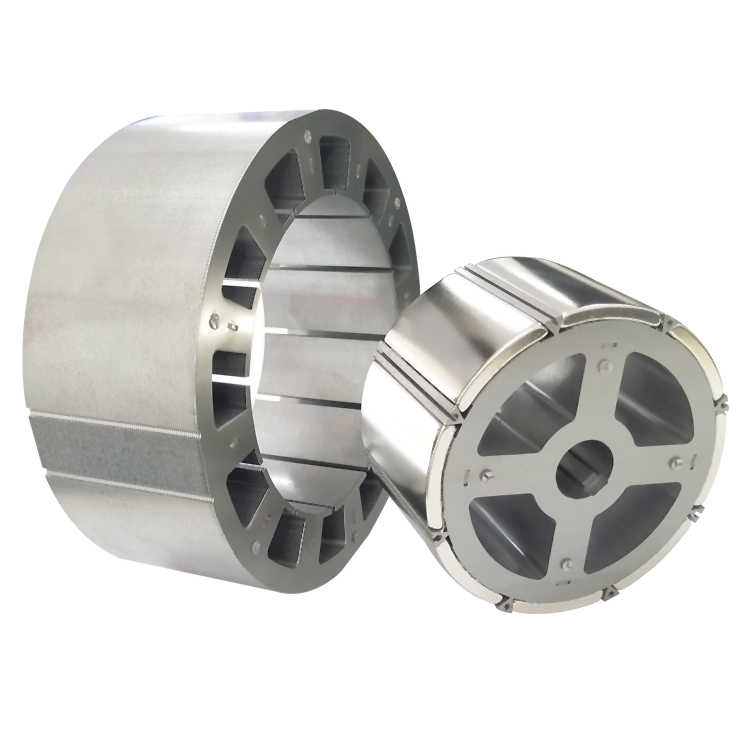Permanent magnet motor and permanent magnet-2
The relationship between magnet performance and motor performance
1. The influence of remanence
For DC motors, under the same winding parameters and test conditions, the higher the remanence, the lower the no-load speed and the lower the no-load current; the greater the maximum torque, the higher the efficiency at the highest efficiency point. In the actual test, the no-load speed and the maximum torque are generally used to judge the residual magnetism standard of the magnet.
For the same winding parameters and electrical parameters, the reason why the higher the remanence, the lower the no-load speed and the lower the no-load current, is that the running motor produces sufficient reversal at a relatively low speed. The voltage is generated so that the algebraic sum of the electromotive force applied to the winding is reduced.

2. The influence of coercivity
During the operation of the motor, there is always the influence of temperature and reverse demagnetization. From the perspective of motor design, the higher the coercive force, the smaller the thickness direction of the magnet can be, and the smaller the coercive force, the larger the thickness direction of the magnet. However, after the coercive force of the magnet exceeds a certain level, it is useless, because other components of the motor cannot work stably at that temperature. The coercivity is sufficient to meet the requirements, and the requirements are met under the recommended experimental conditions as the standard, and there is no need to waste resources.
3. The influence of squareness
Squareness only affects the straightness of the efficiency curve of the motor performance test. Although the straightness of the motor efficiency curve has not been listed as an important index standard, it is very important for the continuous travel distance of the in-wheel motor under natural road conditions. important. Because of the different road conditions, the motor cannot always work at the maximum efficiency point. This is one of the reasons why the maximum efficiency of some motors is not high, but the continuous travel distance is long. A good hub motor should not only have a high maximum efficiency, but also the efficiency curve should be as level as possible, and the slope of efficiency reduction should be as small as possible. As the market, technology and standards of in-wheel motors mature, this will gradually become an important standard.

4. The impact of performance consistency
Inconsistent residual magnetism: Even some of the ones with particularly high performance are not good. Due to the inconsistency of the magnetic flux of each unidirectional magnetic field section, the torque is asymmetry and vibration occurs.
Inconsistent coercivity: In particular, if the coercivity of individual products is too low, reverse demagnetization is likely to occur, which leads to inconsistent magnetic fluxes of the magnets and causes the motor to vibrate. This effect is more significant for brushless motors.
The influence of magnet shape and tolerance on motor performance
1. The influence of magnet thickness
When the inner or outer magnetic circuit ring is fixed, when the thickness increases, the air gap decreases and the effective magnetic flux increases. The obvious performance is that the no-load speed decreases, the no-load current decreases, and the motor's maximum efficiency under the same remanence. improve. However, there are also disadvantages. For example, the motor's commutation vibration increases and the motor's efficiency curve becomes relatively steep. Therefore, the thickness of the motor magnet should be as consistent as possible to reduce vibration.
2. The influence of magnet width
For close-packed brushless motor magnets, the total cumulative gap cannot exceed 0.5 mm. If it is too small, it will not be installed. If it is too small, it will cause the motor to vibrate and reduce the efficiency. This is due to the position of the Hall element that measures the position of the magnet and the actual size of the magnet. The position does not correspond, and the consistency of the width must be ensured, otherwise the efficiency of the motor will be low and the vibration will be large.
For brushed motors, there is a certain gap between the magnets, which is left to the transition zone of mechanical commutation. Although there is a gap, most manufacturers have strict magnet installation procedures to ensure the accuracy of the installation in order to ensure the accuracy of the installation position of the motor magnet. If the width of the magnet exceeds, it will not be able to install; if the width of the magnet is too small, it will cause the magnet positioning to be inaccurate, increase the vibration of the motor and reduce the efficiency.
3. The influence of magnet chamfering size and non-chamfering
If the corner is not chamfered, the rate of change of the magnetic field at the edge of the magnetic field of the motor will be large, which will cause the motor to pulsate. The larger the chamfer, the smaller the vibration. But chamfering generally has a certain loss of magnetic flux. For some specifications, the magnetic flux loss is 0.5~1.5% when chamfering to 0.8. When the residual magnetism of the brushed motor is low, appropriately reducing the chamfer size is beneficial to compensate the residual magnetism, but the pulse vibration of the motor increases. Generally speaking, when the remanence is low, the tolerance in the length direction can be appropriately enlarged, so that the effective magnetic flux can be improved to a certain extent, so that the performance of the motor is basically unchanged.
